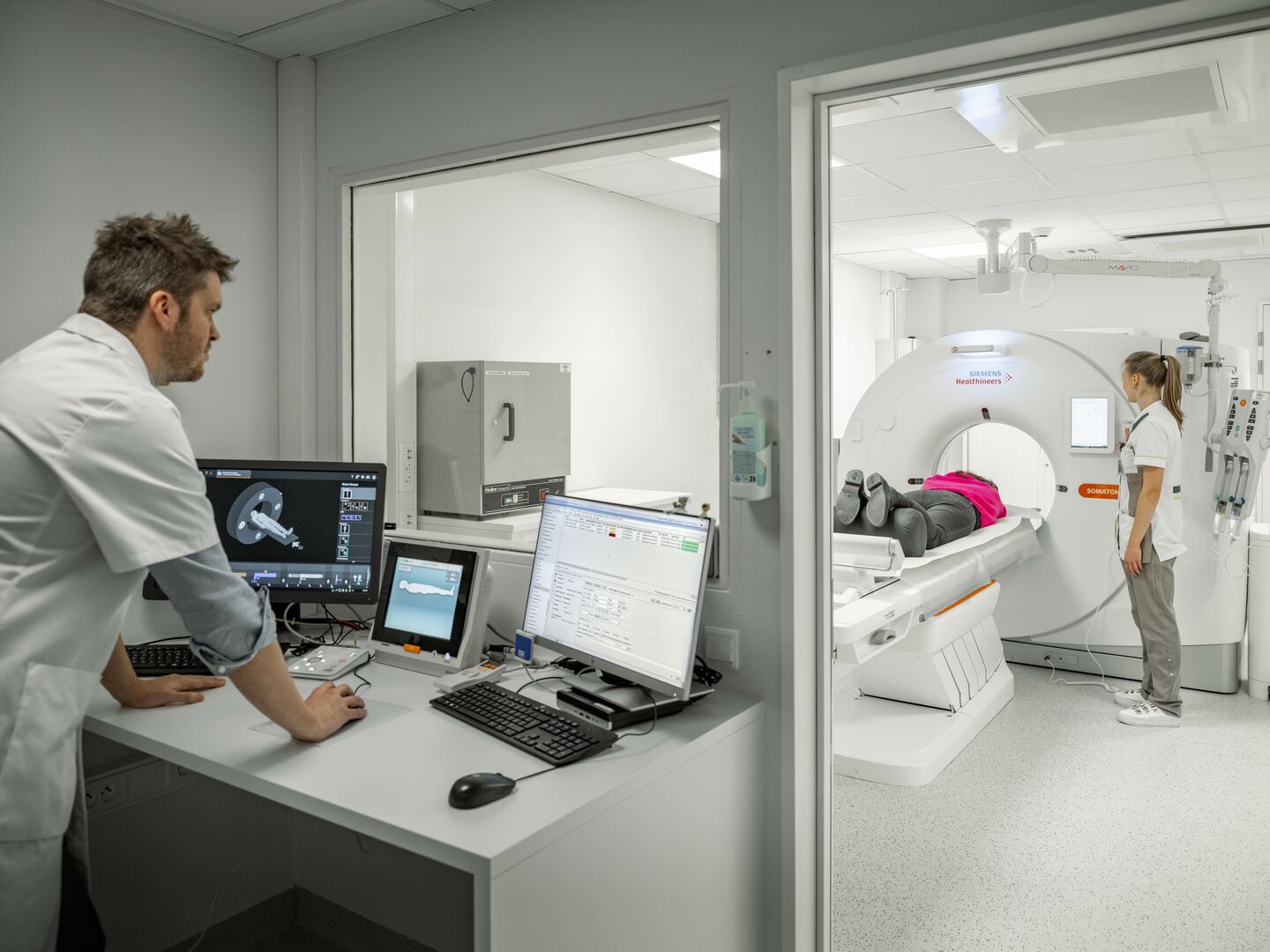CT examination of abdominal and pelvic organs
Plan your appointment
Course of the examination
The examination lasts 20 minutes and is not painful.
The images taken are a series of cross-sections of the abdominal cavity. Depending on the request of your doctor, we will use IV, peroral and rectal administration of contrast fluid. The radiologist determines this and will inform you about it. If you are injected with contrast fluid, you will feel a prick in a vein of the arm, similar to a blood draw. The product gives a heat sensation all over the body, especially at the level of the throat and lower abdomen. This sensation disappears after a minute. There is no need to worry about it.
After the examination, we can make 3D reconstructions on a workstation.
The radiologist who performed the examination makes an initial interpretation of the images during the examination. After the final interpretation, the radiologist sends a report to the doctor who requested the examination. Only this doctor can discuss the results with you.
This examination is only possible by appointment. Please always bring your identity card, your doctor's prescription and any previous radiological examinations. For this examination you must be sober and follow a specific preparation.

Preparation
For this examination, you must be sober.
The examination also requires a longer preparation: before you have to drink a certain amount of water spread over 1 hour. Mixed with a contrast fluid that makes the organs more visible on the X-rays. The radiology nurse will accompany you to the CT scan. If necessary, the nurse will give you a small enema of contrast fluid. If the doctor thinks it's necessary, the nurse will administer contrast fluid during the examination through an injection into a vein of the arm.
Important things that you must notify before a scanner examination: pregnancy, allergy, certain conditions (see questionnaire to be filled out beforehand).
Aftercare
To remove the contrast substance as quickly as possible, we recommend that you drink plenty of fluids after the examination.